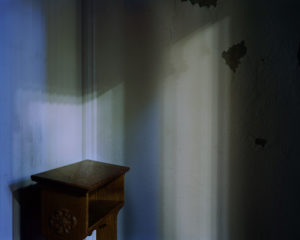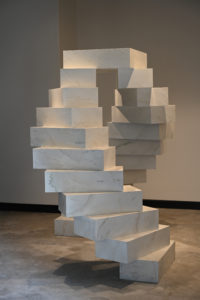Hanae Utamura is a Japanese interdisciplinary artist working in video, performance, new media installation, and sculpture. Her work seeks to connect human beings and earth, using the body as a conduit. She reflects on our relationship to nature, focusing on how we imagine, experience, and affect the natural world through scientific development and historical narration. She is based in Rochester, New York.
Image: Can you talk about how you came to connect science and spirituality in your practice?
HU: I think it is related to the environment where I grew up, in the industrial city of Hitachi, in Ibaraki prefecture in Japan. Hitachi company started there, and it used to be a major city for copper mining. The Hitachi mine chimney, the tallest chimney in the world, was erected there in 1915 to avoid the damage being caused by pollution released at lower heights. It was one of the first examples in Japan of civil protest winning out against a company and resulting in a change.
On the other hand, Hitachi is between the Pacific Ocean and mountains, so there was a lot of nature around me. Also there is Oiwa Shrine, located under the sacred mountain called Oiwa. It’s become quite well known as a place of spiritual power in recent years. It has a rare style of Shinbutsu-shu¯go¯ (a syncretism of Shinto and Buddhism) and is dedicated to 188 gods.
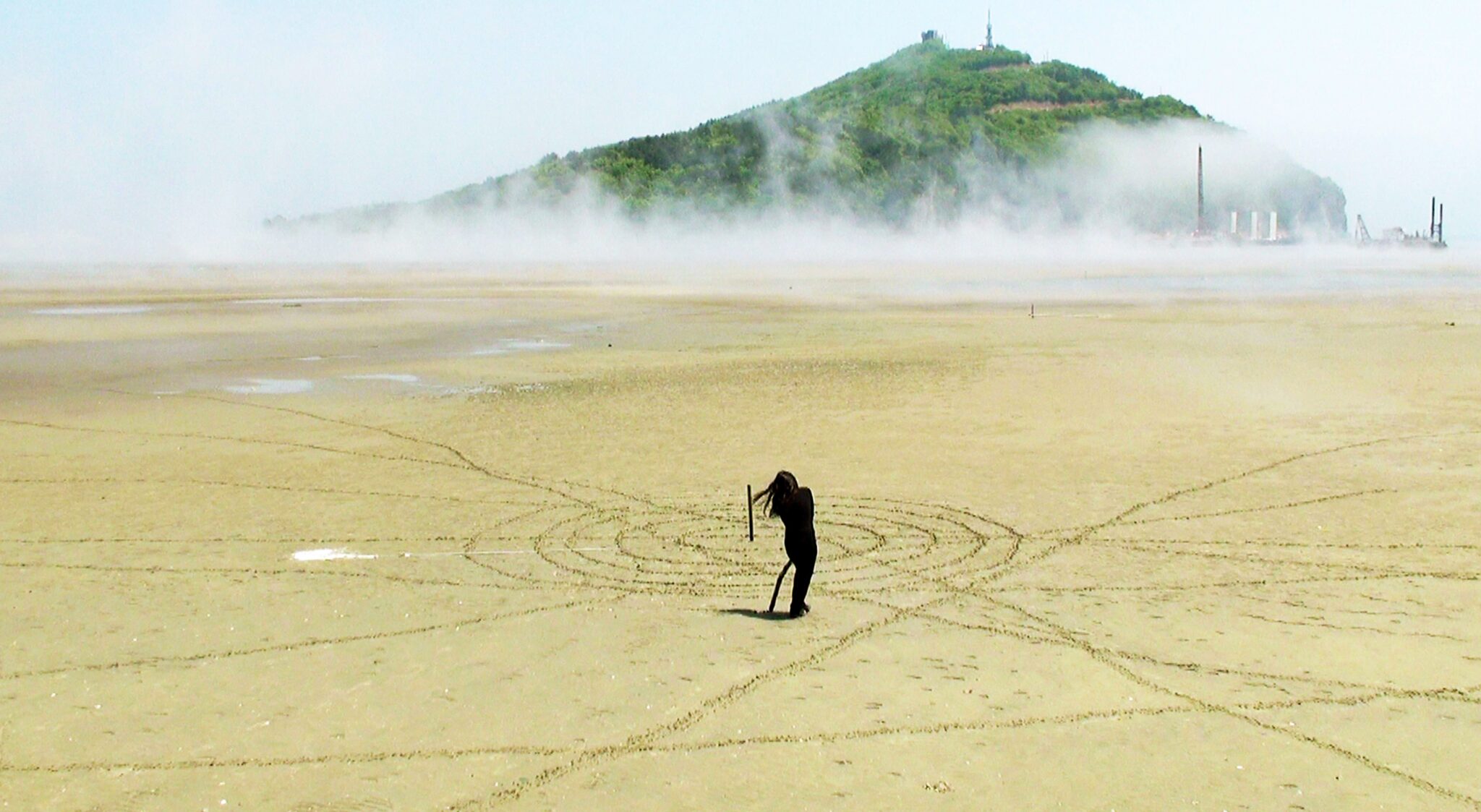
Hanae Utamura. When a Line Becomes a Circle, 2013. 6:46-minute HD video. Performed at Baengnyeongdo Island, South Korea, near the North Korean border.
Image: Shinto has a long and complex history in Japan, including a period in the twentieth century when it was closely tied to the state, and the emperor in particular. What does it mean to you to engage with Shinto practices and beliefs now, and what aspects do you find most compelling?
HU: Before modernity was introduced by foreign countries in the mid-nineteenth century, Japan was closed to the outside for about two hundred years. Shinto allows me to be in touch with the sensibility and connection to the environment of that earlier time. A Shinto shrine honors the place where it is situated as a god. A lot of my projects are site specific, often honoring the history and spirit of the place, and that is greatly influenced by Shinto.
A shrine also protects a place from human intervention—and shrines are often built in places that play important roles in the ecosystem, such as providing water or fostering a symbiotic relation between forest species. In the process of modernization, the Japanese government allowed the destruction of many shrines, and Kumagusu Minakata was the first environmental activist against this movement. He was a scientist, folklorist, philosopher, and environmentalist who did extensive research in fungi, dictyostelium, and slime mold in Nachi Forest in Japan. He also made the Kumagusu Mandala, a drawing that represents his conception of Western sciences and Mahayana Buddhism. He is an influential figure for me, bridging Western and Eastern philosophy.
Image: In Teaching a Stone to Talk, Annie Dillard reflects on the silence of a desacralized world. She writes: “What have we been doing all these centuries but trying to call God back to the mountain, or, failing that, raise a peep out of anything that is not us? What is the difference between a cathedral and a physics lab?” Would it be fair to say you’re trying to teach stones to talk, or at least breathe?
HU: Yes, definitely. I feel that spirit manifests itself in material form. I am creating a framework where these voices can be expressed in concrete ways. My making process invites a lot of chance and contingency, and this is because consciousness affects material conditions, the form of the phenomenological encounter. In quantum physics, we know that the presence of the observer actually changes the result of the experiment. I think now is an interesting time, when the dialogue between religion and science—especially introspective practices such as meditation and material-based practices in scientific research—can advance our understanding of the world like a mirror.
Image: In your recent sculptures, you embed sediment from samples in the deep-sea floor, which seem to respire when you place them within hot glass. How does that work?
HU: When these sediments are put inside hot glass and sealed completely, some gas or air comes out because of the high heat. How it reacts varies depending on the sediments, and that’s the fascinating part. I feel like different parts of the ocean are expressing themselves in various rhythms. Sediments are inorganic material, so most of them don’t contain much carbon and therefore don’t burn much, but some sediments contain more organic material, and they will blow air out of the glass from inside, sometimes even breaking it. In one instance, the glass expanded at the peak of its heat and then shrank when the temperature got lower—like a creature who breathes in and out.
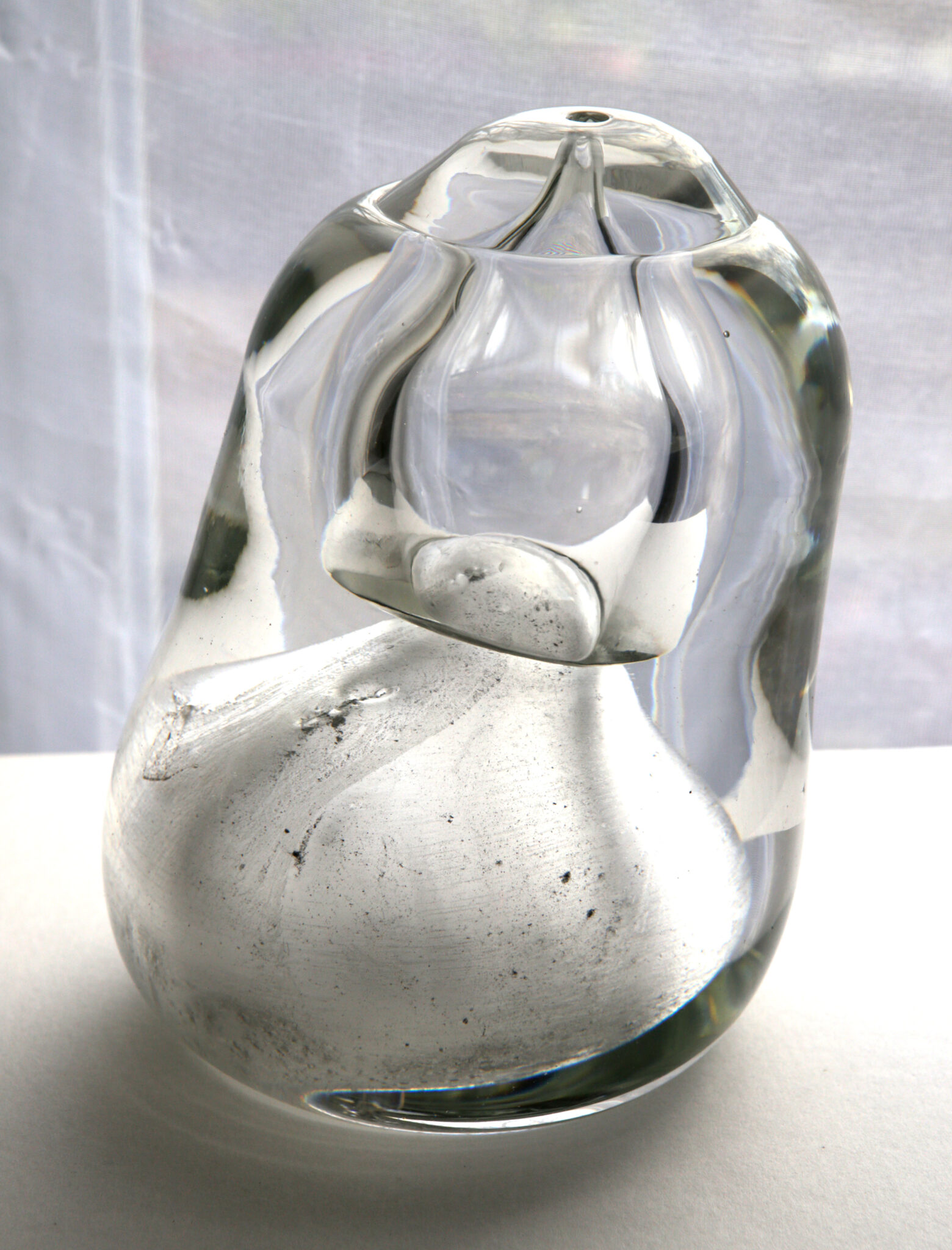
Hanae Utamura. Seafloor Core Breath Glass, 2020. Glass, breath, terrigenous volcanic seafloor. 4¼ x 5½ x 4¼ inches. Supported by the Lamont-Doherty Core Repository.
Image: From your glass works to recent watercolors, you’re very interested in forms that encapsulate or shelter others. Has this been shaped by your experiences of motherhood?
HU: I was thinking a lot about incubated bodies when I was pregnant. Unlike the external world, this internal world is not a visible one, but can only be felt. I try to capture that internal reality by tuning into my consciousness through breathing. I was also thinking a lot about the circulation of water and its memory, and in my work I let the water lead the way as a catalyst. Sixty percent of the human body is made of water, eighty percent with a newborn. The amniotic fluid in which the fetus grows is similar to seawater, which reminds us of life’s origin in the ocean.
I made these watercolor works by looking at the glass works. I took inspiration from how the breath on top merges with the breath of the sediments from underneath the earth. I was also looking at how my breath, which at that point contained another life, was merging into the breath of the earth. These watercolors were inspired by these three components—earth, a life inside me and my body, and connecting these through the act of breathing in and out.
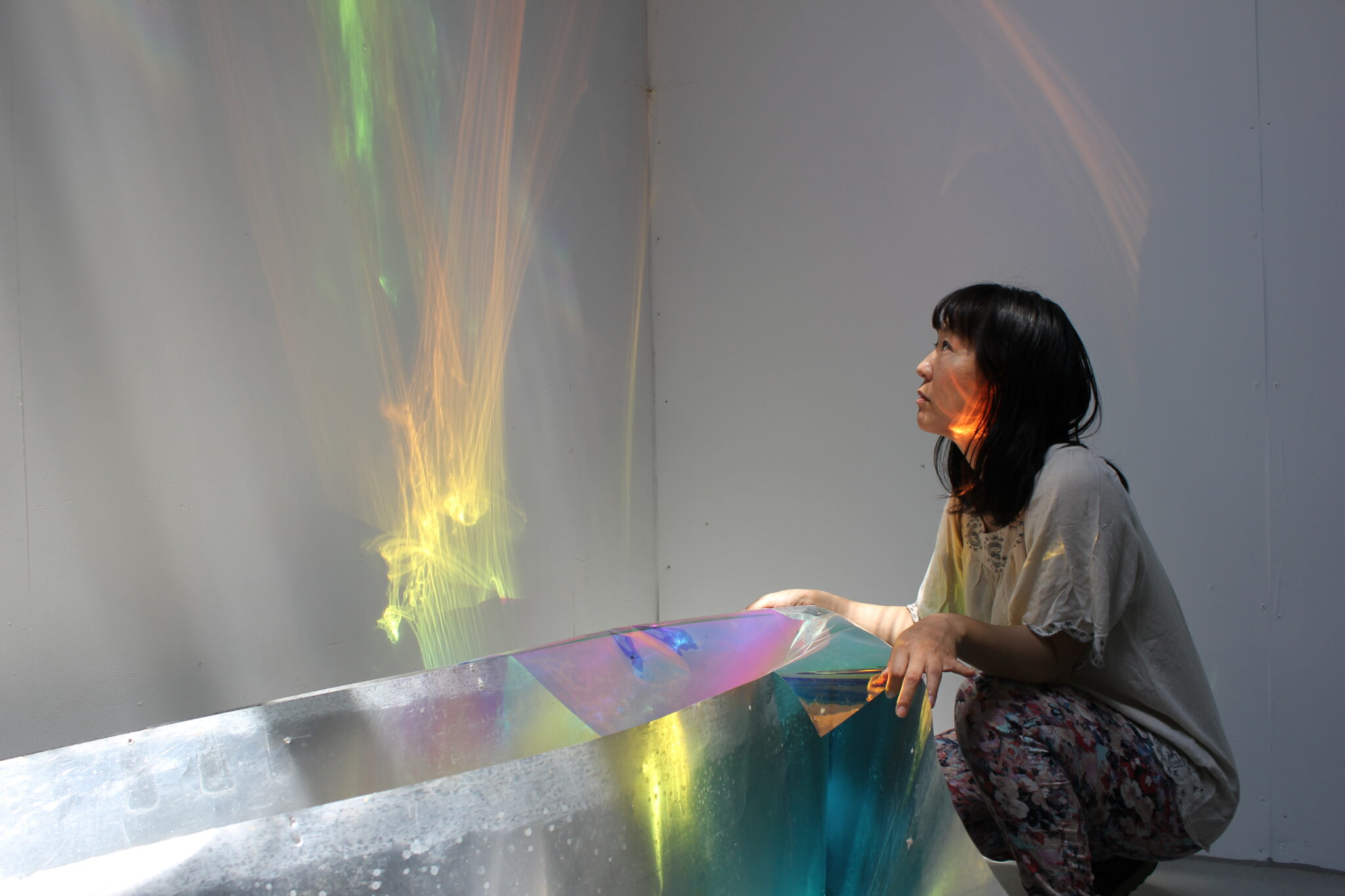
Hanae Utamura in the studio at a residency at Art Omi in Hudson, New York, 2018.
Image: I know you’re also interested in exploring contamination and toxicity. What do you think we can learn from growth in inhospitable environments and conditions?
HU: I take inspiration from how plants tolerate nuclear radiation. One scientist speculates that this is because of an inbuilt memory from ancient times when radiation levels were higher than today. There is a microbe that eats plastic and another that eats nuclear waste. I am amazed at how nature can adapt and even thrive in those circumstances. I think we also find ourselves in the process of learning how to negotiate that toxicity. Toxicity points out and directs us to the real work needed in our society.





